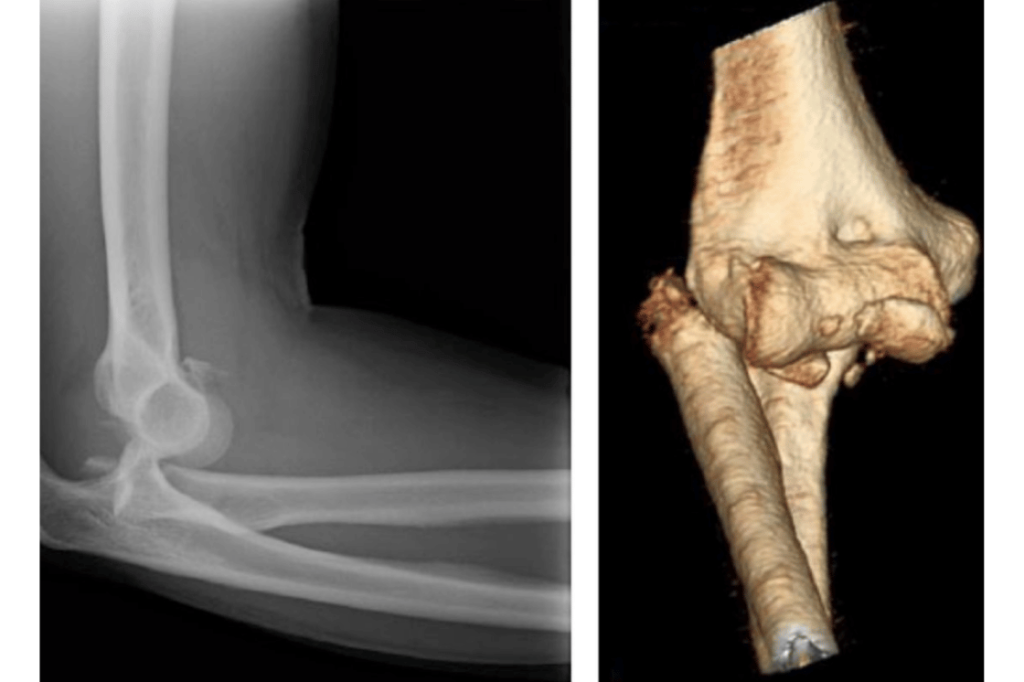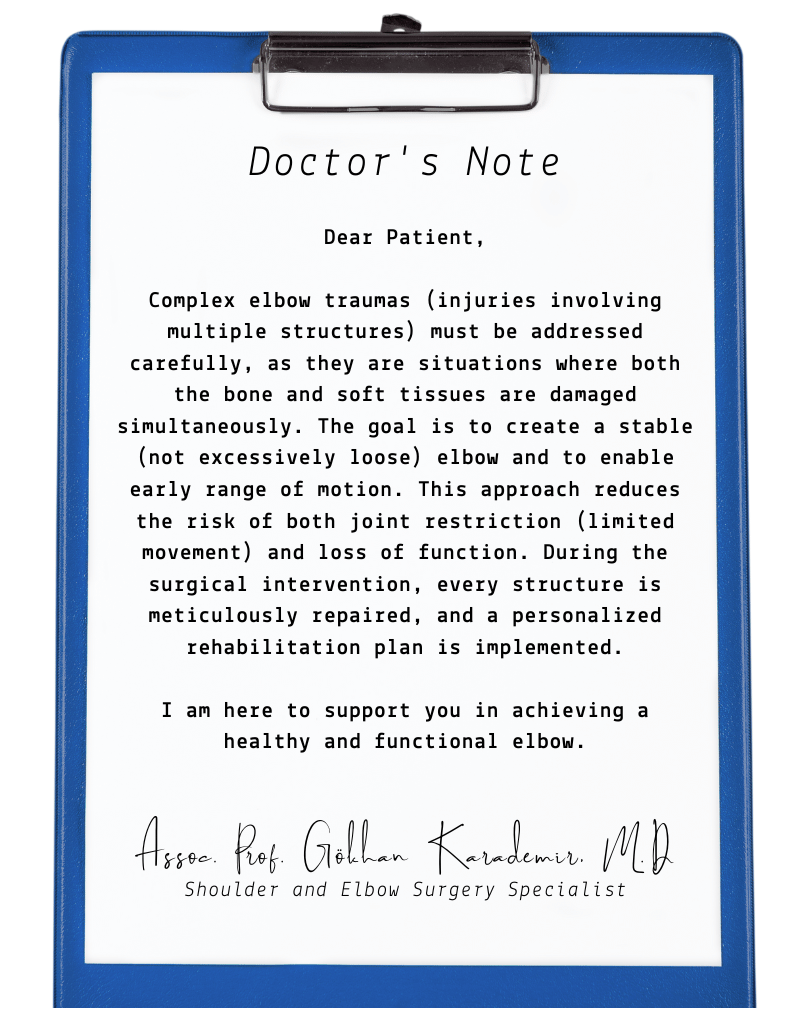An elbow dislocation occurs when the bones that form the elbow (humerus, radius, and ulna) are separated from the joint. While a simple dislocation can be treated with closed reduction (manually setting the joint back in place), if this condition is accompanied by bone fractures, it is called a complex elbow trauma and usually requires surgical treatment.

Complex trauma often includes a radial head fracture, a coronoid process fracture, an olecranon fracture, or ligament injuries (damage to the tough bands that connect bones) along with these structures. Such combinations are also referred to by names like the “terrible triad.” If these conditions are not treated correctly, they can lead to permanent joint instability (excessive looseness), limited range of motion, and pain.
The goal is both to provide joint stability and to make it possible to move the elbow in the early period. Therefore, surgical planning requires a multidisciplinary approach, and typically, multiple structures are repaired.

Duration of Surgery: 1.5–2.5 hours (varies depending on complexity)
Type of Anesthesia: General anesthesia and/or a brachial plexus nerve block (an injection to numb the entire arm)
Surgical Method: Fixation (stabilization) of broken bones with plates/screws Repair of the ligaments Replacement of the radial head with a prosthesis (an artificial joint) if the fracture is severely fragmented (comminuted).
First day: 5–6 (2–3 if a nerve block is used)
First week: 3–4
After the 2nd week: 1–2
A hospital stay of 2 nights is generally recommended to monitor for edema (swelling) and check the surgical site.
First 2 weeks: Arm sling, splint, and limited movement
After the 2nd week: Start of passive and active-assisted exercises 6th week: Functional movements are gradually increased
3–6 months: Return to daily life and regaining muscle strength
6–12 months: Sports and full-exertion use
First dressing change: 2nd day
Wound check: 1st week
Suture removal: 10th–14th day
Yes, but with appropriate surgery and rehabilitation, a full recovery is largely achievable.
Controlled movements are started from the second week; this is important to prevent joint stiffness.
In some advanced cases, slight limitation may remain. Physical therapy is critical in minimizing this.
Yes. Radial head prostheses are generally permanent and provide movement and stability. It is a type of prosthesis with high survivorship, meaning a low risk of loosening, and patients remain satisfied with it even in the long term.
A return is possible within 3–5 weeks for desk jobs and 3–4 months for jobs requiring physical exertion.